Description
Half Moon Conure for Sale
Half Moon Conure for Sale,the Half Moon Conure is a lively, alert, spontaneous little bird. They will bob their head and even dilate their eyes when they are happy to see you, are showing off for you, or are just plain excited!
Though they can be noisy the Half-Moon Conure has a lower volume to their call. They are considered to be one of the quieter birds in the Aratinga species. They enjoy mimicking a variety of sounds and some, like “Lucky”, can even be great talkers.
The Half-Moon Conure has a blue forecrown with a small frontal orange band that runs down to the lores. They resemble the other Orange-fronted Conures but are slightly larger than the Petz’ Conure and have a brown patch on each side of the base of the lower mandible. They resemble the Peach-fronted Conure in appearance, but have a horn-colored macaw-like beak.
Their coloration is mostly green, with a greenish-yellow underside and yellow to olive-yellow underwings and tail. The wings’ outer edges are blue. They, like macaws, have a bare eye ring. Their iris is pale yellow and their eye ring is a drab orange-yellow. Juveniles have a brown iris and a smaller orange frontal band.
Females have a thinner forehead band as well. Like most conures of this size, live for around 30 years on average, and possibly longer.
Care and feeding of Half Moon Conure
Half-Moon Conures are not as destructive as many of the others conures, and can easily be housed is a lighter weight cage such as a cockatiel cage. A roomy cage is appreciated unless the bird is to be let out for periods of exercise and play.
The Orange-fronted Conures eat figs, seeds, nuts, berries, and blossoms, but the Half-Moon Conure has been observed to feed mostly on fruits, so much so that their feathers are often found to be sticky. In captivity these birds will eat an avian pelleted diet as well as a wide variety of fruits. They are not as quick to bathe as most conures. Offer them a bath, or if they are not interested in that give them a misting of warm water with a spray bottle or in the shower or sink about every other week.
Bird Cages
Half Moon Conure for sale love roomy cages! A cage best suited for a conure must be large enough that the tail does not touch the bottom, and the bird has enough room for unrestricted movements.
For a small size conure, a minimum of 24″x16″x20″ (60 x 40 x 50 cm), and for the larger species, a minimum of 44″x26″x40″ (120 x 65 x 100 cm). This will provide room for both horizontal exercise and vertical climbing.
Bird Perch
Provide two Perches, sized between 3/4″ to 1″ (2 – 2.5 cm). Place one up high for roosting and one low by the food, water, and gravel dishes. Natural perches from willow, poplar and fruit trees are good for the bird’s feet and for it’s beak. The gnawing it will do on the perches will also alleviate your pet’s boredom.
Handling/Training
Always handle your pet Half Moon Conure gently. If a person is a afraid of a bird, the bird can sense this and it can make it impossible to develop a relationship. Never hit your bird or you will loose it’s trust, probably forever.
Taming Basics:
To train you pet, the first thing you should do is have it’s wings clipped. A bathroom is a good area for working with your conure to train it. Be sure to cover the mirrors, have the windows closed and covered and the door closed.
Always reward good behavior and each success with loving praise and a treat. Some treats are a cracker, fruit such as a piece of grape, or a nut. Repeat the hand-taming lessons several times a day but for short periods of time, about 20 minutes a session.
Initial Training:
Place the conure on a perch. If it insists on flying off, pick it up and replace it on the perch until it becomes use to the perch and is comfortable with it.
The next step is to take a second perch and gently push into your pet’s chest to encourage it to step up on it. Sometimes offering a treat to coax it up on the perch as it reaches for the treat will help.
Once it steps up without hesitation, you can then substitute your finger for the perch. If your conure tries to bite, you can blow on it and it will soon learn to behave.
Advanced Training:
These are very bright birds and love learning tricks. Some of the tricks you can teach it to do are to play dead, lay on its back, and even pick up objects and bring them to you. Your Conure can also learn to talk with patience and persistence.
Maintenance
The basic cage care includes daily cleaning of the water and food dishes. Weekly you should wash all the perches and dirty toys. The floor should be lined with newspaper and changed daily, or covered with an absorbent bedding such as corn cobs or pine shavings and changed weekly. A total hosing down and disinfecting of an aviary should be done yearly, replacing anything that needs to be freshened, such as old dishes, toys and perches.
Half Moon Conure Temperament
Half-moon conures are very active birds and love to play and climb. A well-socialized bird will enjoy attention from its owner and is typically good-natured.
They are not as excited about bathing as some other birds but may enjoy an occasional misting of water. Half-moon conures are typically not as destructive as some other conures and parrots can be.
Temperature
Half-moon conures, like other conures, like temperatures between 65 and 80 degrees Fahrenheit. They are, nevertheless, affected if the shift is sudden and extreme. It is also beneficial for them to keep their cage in a clean environment with lots of natural light and air.
Half Moon Conure Social Behaviors
All Orange-fronted Conures are social birds and live in fairly large flocks in the wild (up to about 80 birds) for a good part of the year. During mating season however, they pair up and live alone or with a few other pairs. They love to play and will preen each other during resting periods.
Half Moon Conure Colors and Markings
These conures are primarily a bright green with their back and wing feathers gradually turning into emerald green. They have a naked eye ring like macaws, a horn colored beak instead of a black one, and an orange band just above their beak with a blue forehead. Both males and females have the same colorations.
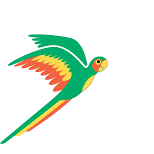
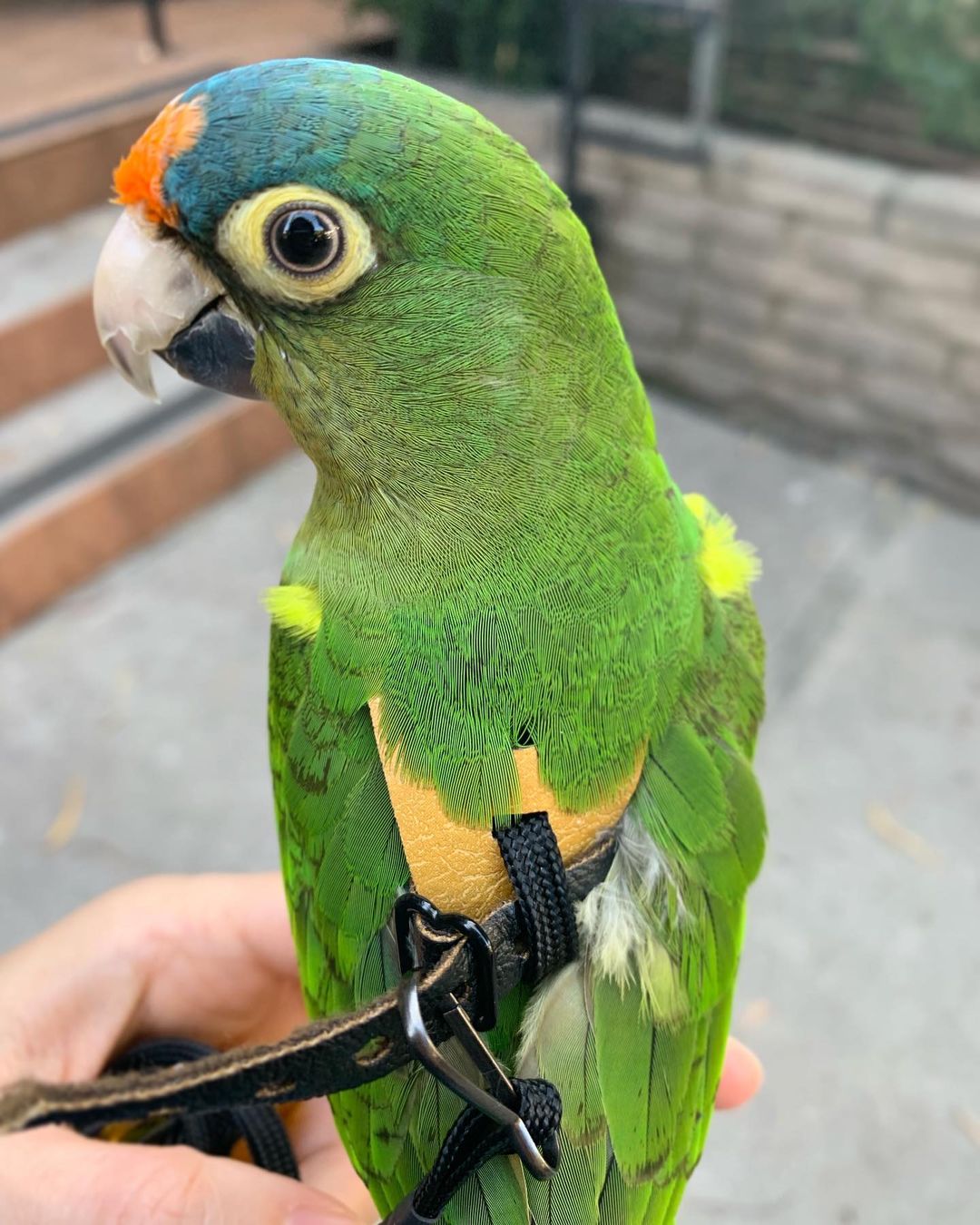
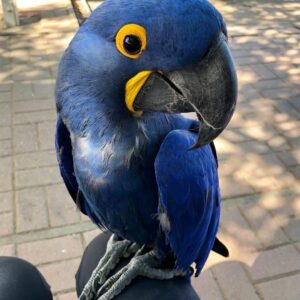
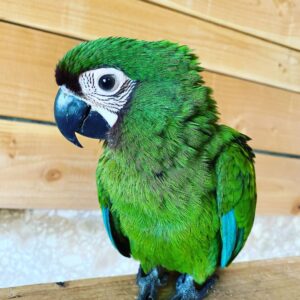
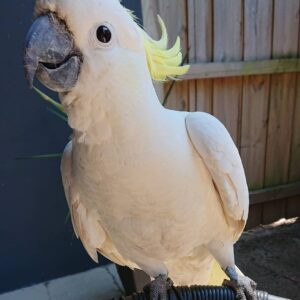
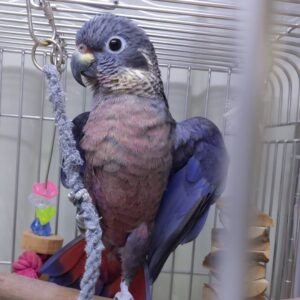
Reviews
There are no reviews yet.